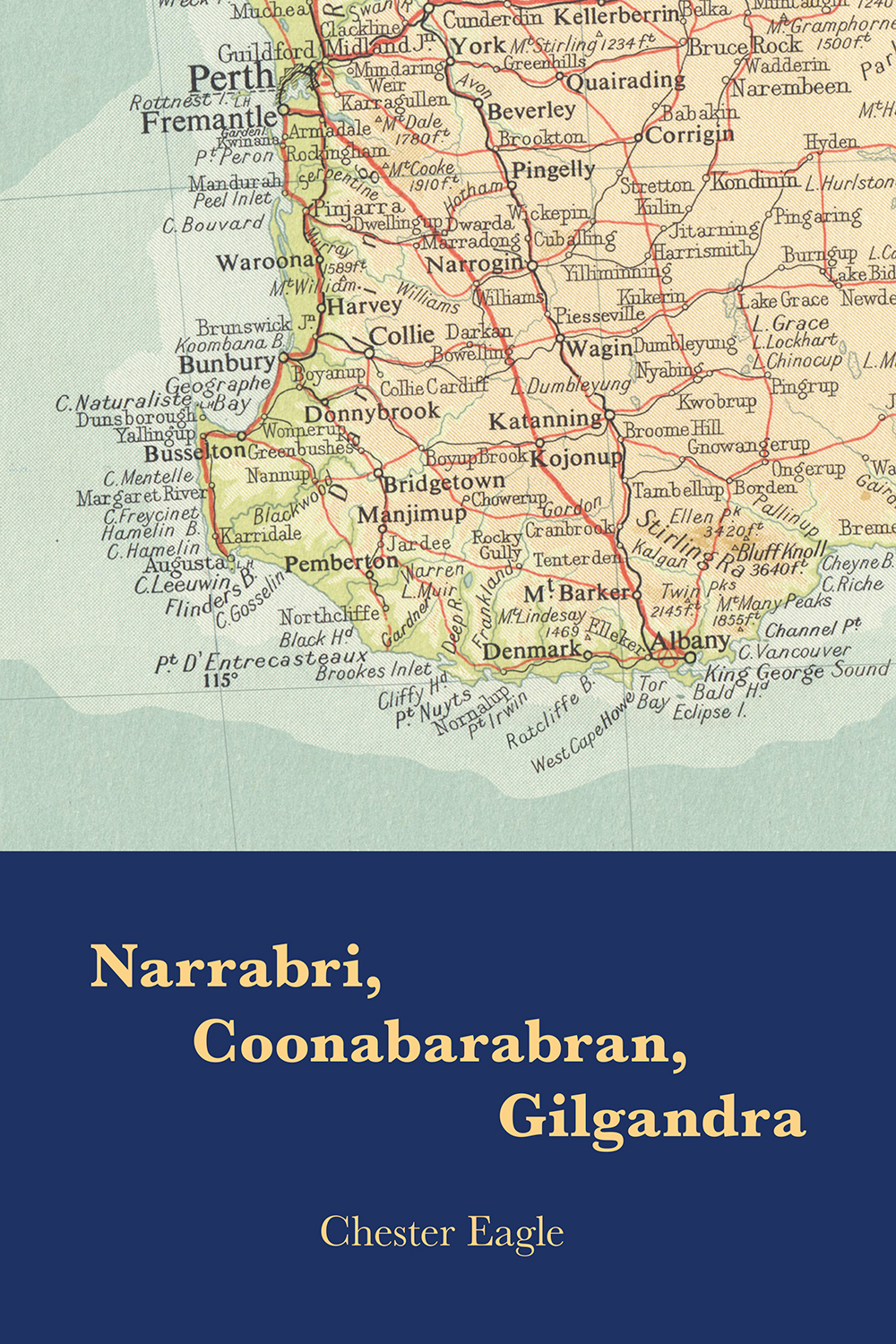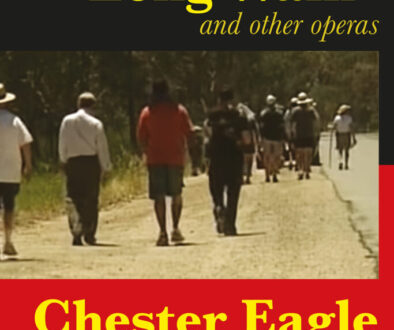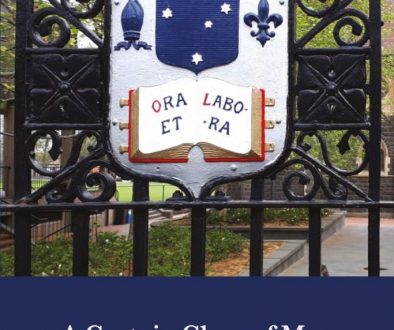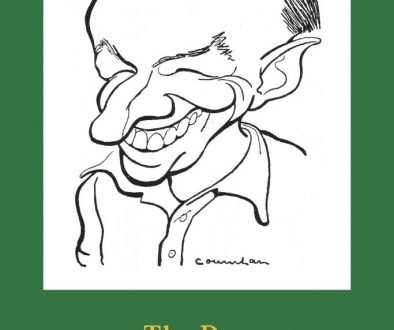Narrabri, Coonabarabran, Gilgandra

Written by Chester Eagle
Designed by Chester Eagle
Layout by Karen Wilson
200 copies printed by Design To Print
Circa 3,270 words
Electronic publication by Trojan Press (2018)
Narrabri, Coonabarabran, Gilgandra:
Father was back after a week away. He’d wanted to buy sheep, so Hacker Thompson, a local agent, had driven him around parts of northern and western New South Wales, showing him mobs for sale. Father hadn’t bought any, but the trip had affected him. He had a map on the sunroom table and showed me where he’d been. The index finger of his right hand rested on Narrabri as he told me about the mob they’d inspected there, the farmer who wanted to sell – decent sort of chap – and the sheep they’d been offered. ‘He was short of feed, they were pretty scrawny animals. The price was fair but they’d never been quality sheep. You could put’em in a good paddock for a while but they wouldn’t amount to much. I told Hacker I didn’t want them. Then from there …’
Father’s hand drifted down to Coonabarabran, where they’d inspected another mob without buying. ‘Country’s dry up there. Nothing green in sight. No wonder they want to sell.’ His hand moved. Gilgandra disappeared under his finger. Nothing there either. I wondered how much the trip had cost New Zealand Loan, the company Hacker worked for. Father didn’t seem to care. It was their job to make sales if they could. They got their cut when there was a sale, not to mention selling the wool that the sheep produced. I understood this. Father had taken me to a wool auction in Melbourne, and to a huge warehouse in the western part of the city where buyers could inspect the bales. It was an industry that spanned vast stretches of the country. There were other ways to make a living off the land but wool, wheat and cattle were the main ones. They paid for my schooling in Melbourne. They carried the economy once the gold boom had dwindled. The British, still inclined to think imperially, might look down on former colonies, but rural people weren’t bluffed. If the British wanted wool, they had to bid for it against Americans and Italians who wanted it too. In places like Narrabri, Australia stood up strong. I think Father felt proud, even though he hadn’t bought any sheep. He might have done, and possibly bought well. Rural Australia was that sort of place.
Then. Seventy years later, I can still see his fingers feeling for something the map reminded him of, those days of travel when he’d felt loose inside the tradition of a hard-working countryside, remote enough, often hot, and characterised by distance, a place, an area, where he felt good, a place that was his. That was something Father passed on to me, a feeling that the country in all its indifference, its size, its droughts, fires and floods and all the rest was something that his family had committed itself to, and was also, and therefore, mine. Looking back, at the age of eighty-five, I am amazed by what I received. What a gift! Something of my father’s generation clings to me as I travel the country, although the optimism that was theirs – along with bouts of despair! – is long gone. I speak of a time when there were no war memorials dotting the countryside, and then of a time when there were. Two or three generations left their names on those memorials, and then another age dawned, overhung by the mushroom clouds ending World War 2. Who can forget Hiroshima and Nagasaki? Their names will never be forgotten. Names are like that; they can outlast the things they’ve been attached to. I think of West Wyalong, in New South Wales, more prominent on the map and in reality than Wyalong, a little to the east. I remember hearing an English parliamentarian visiting Sydney and telling the state parliament that he came from Old South Wales. Having said this he paused for a reaction which didn’t come. A couple of minutes later he repeated the words, again without response. The local pollies hadn’t thought of themselves as new so they didn’t react to someone claiming to be old; what was the man talking about?
Names are fascinating because something of their origin refuses to go away. Take New York. It’s no longer new, having been given its present name in 1664 (it was previously New Amsterdam), but it will never grow old: it simply can’t, and won’t. I think of Seventeen Seventy, on the east coast of Queensland; its site must have been observed or possibly visited by Captain Cook’s Endeavour in a moment which will last forever now, embodied in a name. Something of the character, or the situation of the name-bestower is affixed, with the name, to what had been thought of as an undiscovered place. I think of Michael Leunig’s mountain-top people, clinging to each other on top of Mount Hopeless, Mount Buggery, Mount Disappointment, et cetera. There may be a Cape of Good Hope, but that’s a rarity: Mount Misery or Mount Despair seems more likely!
They come down the years to us, those explorers’ first impressions, inscribed on a landscape that had no English words till then. Botany Bay because Sir Joseph Banks found much to interest him. The Heads for the opening that gave Cook and Banks their first sight of Sydney Harbour, the sails of their ships puzzling the native people who didn’t use wind in the European way. Where had they come from? What were they? Both sides were curious. The British had been instructed to be respectful, a command contradicted by their presence, since they intended to make use of the land, something they told themselves the natives didn’t do. How wrong they were! The natives lit fires, and slipped through the bush in the way of animals, from whom they chose not to distinguish themselves, connected as they were by totems. The natives followed tracks, the white settlers made roads, built them if they were important enough; words had different roles in the two cultures. Looking for equivalents between the tongues was tricky because the emphases of their thinking were different. It was easy enough to pick up nouns such as kangaroo or didgeridoo, but how did they think? What were the important concepts in their minds? Sydney Cove may have been settled in 1788 but it was more than a century before Baldwin Spencer and Frank Gillen made serious attempts to understand the universe as the black people understood it, and their thinking was full of surmise and speculation despite the fact that the black people had a reasonable amount of trust in them and made an effort to be understood because they could see that the anthropologists were making a similar, and respectful, effort too. So we are, today, in the quaint position that our country’s map is sprinkled, dusted if you prefer it, with aboriginal names. Open an atlas, look anywhere you please. Dive into the glove-box of your car and pull out the maps. There they are, right enough. Where would you like to start? I suggest the south-west of Western Australia, let’s have a look.
Manjimup. It sits in the middle of towns with a variety of names – the Irish Donnybrook, the cheerful Toodyay, and more obvious names like Salmon Gums and Norseman (who was he?) but then we notice that the ending of the word is common to many places in that corner of the state – Kojonup, Nannup, Kendinup, Yallingup, Kwobruk, Ongerup, Tamballup and the tongue-twisting Gnowangerup. Up up up: what does this suffix mean? In my childhood, the Finley Mail, our local paper, used to reprint columns from newspapers with rather larger circulations explaining the meanings of aboriginal place names. At a young age I became disbelieving because it appeared from these columns that about one aboriginal word in three meant ‘meeting place of the waters’. This could hardly be so? There wasn’t enough water in the Riverina for that! The suffix -up must mean something like a gathering place, watering hole, or place central to the local people’s activities, just as Beverley, Rockingham, Albany or Margaret River had become in some way substantial for white settlers.
Before the land had been settled by Europeans, it had been examined from the sea by Dutch sailors on their way to the East Indies, and by French sailors before the revolutionary turmoil in their homeland brought an end to maritime exploration; the west coast of the Australian continent is littered with names such as Poissonier Pointe, Cap Poivre (Cape Pepper!), Gantheaume Bay or, further north, Cap L’Eveque (the bishop’s cape). There are names of sailors – Dampier, Dirk Hartog Island – and their ships – Cap Freycinet, Cap Hamelin, or the Channels named Naturaliste or Géographe leading to the Welsh-named Carnarvon, situated where Western Australia bulges into the Indian Ocean. Other oddities can be found by poring over the map, as Father did after his travels: Payne’s Find, once a goldfield, now little more than an hospitable pub in a plain of indifference; Cue (nothing to do with billiards, surely?); Boulder (obvious enough, I suppose); our old friends, those repeated words, Murrin Murrin and Milly Milly; and another mining name, Coolgardie, unforgettable to anyone of my generation who ever poured water on the top of a cloth-sided container cooled by evaporation on hot summer days.
Beyond these names which people of European descent can at least partially decipher are the earlier, aboriginal names, mysterious to most of us but strangely eloquent, and there is also the resonant Nullarbor Plain (nullus arbor = Latin for no trees) to be crossed if one is to get even as far east as Adelaide. The plain can be crossed by rail as well as by road, and if we do it that way we run into another set of names, some of them baffling to me – Karonie, Coonana and Zanthus – while others remind us of the earliest parliaments of the Commonwealth – Forrest, Reid, Deakin and Cook, followed mysteriously by Ooldea! There are names like Patience Well, Mount Destruction and Mount Zephyr (a stranger, surely, in the outback), as well as a handful of places with names we may feel we ought to know – the Ernest Giles range, after the explorer; Lake Throssell, presumably named for a member of the family that produced Katherine Susannah Prichard’s husband, who won a VC at Gallipoli but later suicided; and a mysterious Mount Sir Thomas which should be surrounded by the London Philharmonic but tapers off into the plains leading to the Pitjanjatjara lands in South Australia, a little to the north of the area known as Woomera (almost as doom-laden as the Japanese cities mentioned before).
A glance at the map will show that we are getting close to Uluru, possibly Australia’s most famous name, and certainly its most spiritual. Names have meanings and these, as we know, can change. Meanings change because, one way or another, we learn to think in ways that weren’t always possible. This huge red rock was once named after a surveyor called Ayer, but the aboriginal name, its central position in the continent and a development in the way Australians perceive the land we’ve taken from our first people led to a change in thinking about our country. Our thoughts about places are often in a state of flux. Many years ago I drove a Chinese visitor from Launceston to Hobart. We hadn’t got far when I noticed that a farmer had stacked the bales he’d cut and bound – rectangular bales, not to day’s rolled-up ones – so that they formed a lifesize Stonehenge in his paddock. I laughed out loud. My visitor was puzzled; what did I find so amusing? I pointed, of course, but she didn’t recognise Stonehenge, seeing nothing but some oddly stacked shapes. I’d always connected Stonehenge with obscure pre-Christian rites, and ancient understandings of the seasons … and here it was, turned into a delightful joke! Things couldn’t force you to take them seriously. You could make meanings of your own, not accept some other person’s imposition. This happens with towns and cities originally named in respect of someone important: Sydney, Melbourne, Brisbane, Adelaide, Townsville … the list goes on. Names of this sort are, for important population centres, roughly equivalent, in my mind, to the nostalgic names dotted across our countryside which were meant to connect a new settlement with something long-established in the home country. Names of properties, whether stations with far-flung boundaries or simple suburban homes, are often of this sort: here’s a sprinkling: Meadow Glen, Fairview, Iris Vale, Bellbird or Spring Ridge. Names of this sort convey a message. Arrivals at places stating their identities in this way are declaring a character, perhaps a way of life, likely to be familiar to those who come upon them. At the opposite extreme, famous cities – Paris, Moscow, Madrid, Rome, Berlin – have so much personality, are so storied, that their names are reputations, changing and/or being added to all the time; and even the lesser settlements referred to above, have been christened with such obvious intention that their identity is forever in danger of being challenged. I think of the Pentland Hills on the highway between Melbourne and Ballarat, named, I must presume, by Scottish settlers from Aberdeen because of a resemblance to the Pentland Hills a little to the north of that city. Never having been to Scotland, I have no idea how similar, or otherwise, they may be, so I travel through the area with the name, and the comparison, in a holding pattern; since I don’t know, I refuse to be swayed in either direction. It seems to me that to name an Australian feature after a Scottish (or elsewhere) place is to create an obstacle to being familiar with the new locale. It needs to be seen with fresh eyes, for a poor comparison seems to tie the new world to the old in a way unlikely to be useful over time.
Place names often have an unsettled relationship with history, tying new suburbs to events with which they are hardly related. I’m thinking of an area in Melbourne’s Caulfield where my parents lived for many years, an area distinguished, if that’s the word, by the names of places reminiscent of the Crimean War of the mid nineteenth century: Balaclava, Inkerman, Sebastopol and the like. Similarly, but a generation later, areas developed by the Victorian Housing Commission in the aftermath of World War 2 were named after things and places familiar to those who were alive and conscious in the time of battles to rid Egypt and South-East Asia of invaders: Alamein, Catalina, Corvette, Timor, Borneo and Midway. I never drive through such areas without thinking of the battles, horrors and privations of that time and the lasting effects on those who were engaged in them.
Let us return to our map of Australia, seeing what we can find of the country’s past and its thinking as we look at its names. My daughter lives in Cairns; I’ve been there many times and have driven past and walked around two peaks with the unlikely names of Bartle Frère and Bellenden Ker. The first was named for a British colonial administrator in South Africa at the time of what the British called the Zulu Wars, and the second was named after John Bellenden Ker Gawler, a botanist, no less. I venture to say that neither of these gentlemen would be remembered in modern north Queensland had their names not been affixed to the state’s two highest peaks. Give me Hopeless, Disappointment, Despair any day! Why? Because there’s almost certainly a story behind such names, and stories move me, most of all, perhaps, that of Horseshoe Bend, in the lower part of the Northern Territory. This is one of the saddest tales of our pioneering days. Pastor Carl Strehlow led a tiny group of German missionaries among the distressed Arrernte people of Central Australia, built a church, a kitchen and living quarters for blacks and whites alike at Hermannsburg, south-west of the centre’s Alice Springs, refused to allow the practices of the people he was ‘saving’ and offered them instead the Lutheran vision of Christianity. We can think of this in a number of ways – as madness, as salvation, as an imposition as ruthless as the land grabs of the cattle men, as an act of sublime charity, or however else we please, but the pastor was seen by blacks and whites alike as a rock-like figure of Central Australian life. He grew sick, he asked for leave, but leave wasn’t granted. Eventually an arrangement was made to send a doctor in a car across roadless country to see to his needs. The pastor, his wife and son, and two black ‘drivers’, set off to meet the advancing motor vehicle. They got as far as Horseshoe Bend and it was there, in blazing heat, that the pastor died in a grog shanty where he had been given a bed. He was buried in harshly beautiful surroundings, and fifty-six years later his son, by then an anthropologist, wrote an account – Journey To Horseshoe Bend – of the journey that had killed his father. Another twenty-five years later, the Sydney composer Andrew Schultz set Strehlow’s journey to music in a symphonic cantata of the same name which ends with a deluge of rain hammering on the corrugated iron shanty. The younger Strehlow went on to a somewhat contentious career but he fixed the name of the place where his father died in the minds of thousands of Australians by his memorable account of what was for him an agonising experience.
Our Australian map offers us quite a few such places associated with people, events or families. There must be hundreds of these, but a few that spring to my mind are Cowra (Japanese prisoner of war escape); Kingaroy (home of Queensland’s notorious Joh Bjelke Petersen, Premier of his state); Talbingo, on the road between Tumut and Cooma, New South Wales, home of Miles Franklin’s grandparents and her blissful abode in the earliest, happiest years of her life; and I cannot fail to include Bowral, where the young Don Bradman grew up and where he’s still remembered today. (I’ll let you finish this list for yourself.)
Trailing our fingers across the map, as Father did when he wanted to show me where he’d been, we find all sorts of oddities. More of those repeated-word places, such as Curl Curl, Kurri Kurri, Woy Woy and Wagga Wagga. Do other languages have such names, and if so, why? Because I live not very far from the Merri Creek which flows through Melbourne I notice that there’s a spot called Merriwagga, a long way from the stream flowing through my city and a good 250 kilometres from Wagga Wagga: how are these words connected, as they must surely be? Two places even further apart yet mysteriously connected are Parramatta and Wangaratta, and again I’m left asking for an explanation that doesn’t present itself. I shall content myself, therefore, with a handful – you can search the map yourself for more! – of my favourites, in order of the delight which they bring to me. Here we go. Broke, not far from Cessnock, in New South Wales. Galore, in Queensland, far to the north. Overflow and it’s not in Clancy’s country, either. Finger Post (south of Dubbo and again in New South Wales). Nevertire (on a black soil plain). Last of all, and a suitable name for a little railway station because it makes us wonder why it was ever built – Quandary!
The writing of this book:
Sometimes the most obvious truths are so simple and so close to the ends of our noses that we overlook them, and go in search of more subtle and intellectual explanations of how things are. The solution to this problem, I think, is to take note of the simple things that we find we simply can\’t forget. These are likely to be the fundamental moments of our existence. Hence Father’s fingers on his map of New South Wales. I’ve never forgotten what he was experiencing, and expressing, as he showed me where he’d been. Without quite understanding it, he was exploring – mapping – his life as a woolgrower? Why? And what was the follow-on effect on me? This little mini-mag is my best try at answering those questions.



